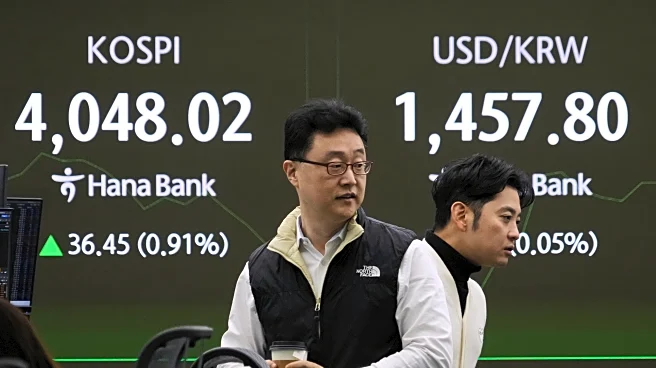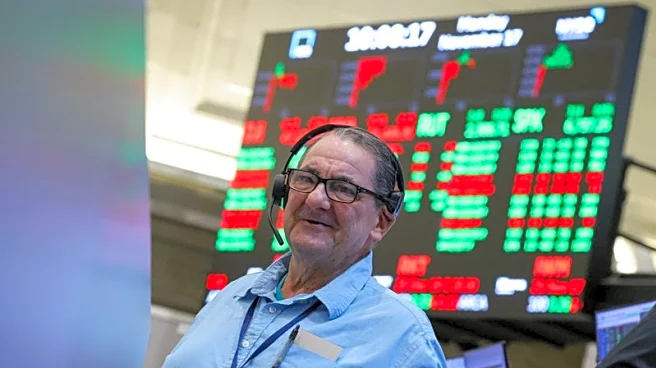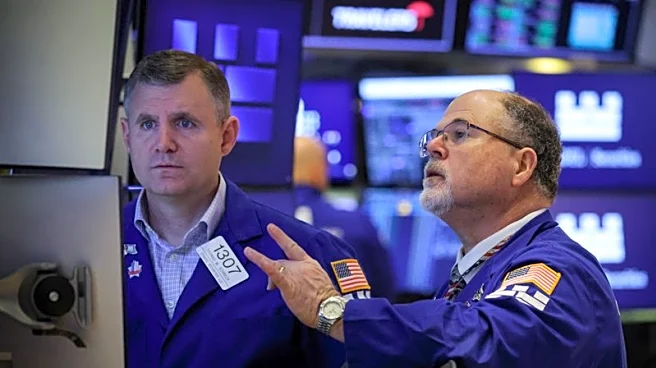What's Happening?
As the year-end approaches, Wall Street strategists are releasing their forecasts for the 2026 stock market. Morgan Stanley has projected the S&P 500 to reach 7,800 over the next 12 months, indicating
a 16% increase from its current level. Key drivers for this bullish outlook include positive operating leverage, AI-driven efficiency gains, and favorable tax and regulatory policies. Sam Stovall of CFRA also anticipates strong gains, setting a year-end target of 7,400 for the S&P 500, suggesting a 10% upside. These forecasts come amid expectations of continued bull market momentum, albeit at a slower pace due to potential mid-term election year volatility.
Why It's Important?
These optimistic forecasts are crucial for investors and market participants as they shape investment strategies and expectations for the coming year. The projected growth in the S&P 500 suggests confidence in the U.S. economy's resilience and the potential for corporate earnings growth. However, the forecasts also highlight challenges such as election year volatility, which could impact market stability. Investors may need to consider these factors when making portfolio decisions, balancing optimism with caution.
What's Next?
As more research firms and banks release their 2026 outlooks, investors will have a broader range of perspectives to consider. The market's response to these forecasts will be closely watched, particularly in relation to economic indicators and geopolitical developments. Additionally, the impact of mid-term elections on market volatility will be a key focus, potentially influencing investment strategies and market sentiment.
Beyond the Headlines
The bullish forecasts underscore the importance of technological advancements, such as AI, in driving market growth. As companies leverage AI for efficiency gains, there may be broader implications for employment and industry dynamics. Furthermore, the role of regulatory policies in shaping market conditions highlights the intersection of politics and economics, with potential long-term effects on investment landscapes.













